Grain Dust Management
Background
The Port of Hamilton is the largest export gateway for Ontario-grown grain in the province. Port terminals provide an essential service to agricultural producers. They handle corn, wheat, canola seed and soybeans grown on Ontario farms. Ontario farmers rely on the Port of Hamilton to get their product to market. Product is brought to port by truck or railcar, and then transloaded to storage silos, and aboard vessels for export. Some product is used for domestic food products; soybeans and canola seed may be processed to produce edible oils and animal feedstock. Wheat will be milled to provide flour to Ontario bakeries.Grain terminals at the Port of Hamilton
The Port of Hamilton is home to three grain export terminals and one of Ontario’s largest oilseed (soybeans and canola) processing facilities, as well as Canada’s newest flour mill:- Parrish & Heimbecker – terminal and flour mill
- Richardson International
- G3 Canada Ltd.
- Bunge Canada
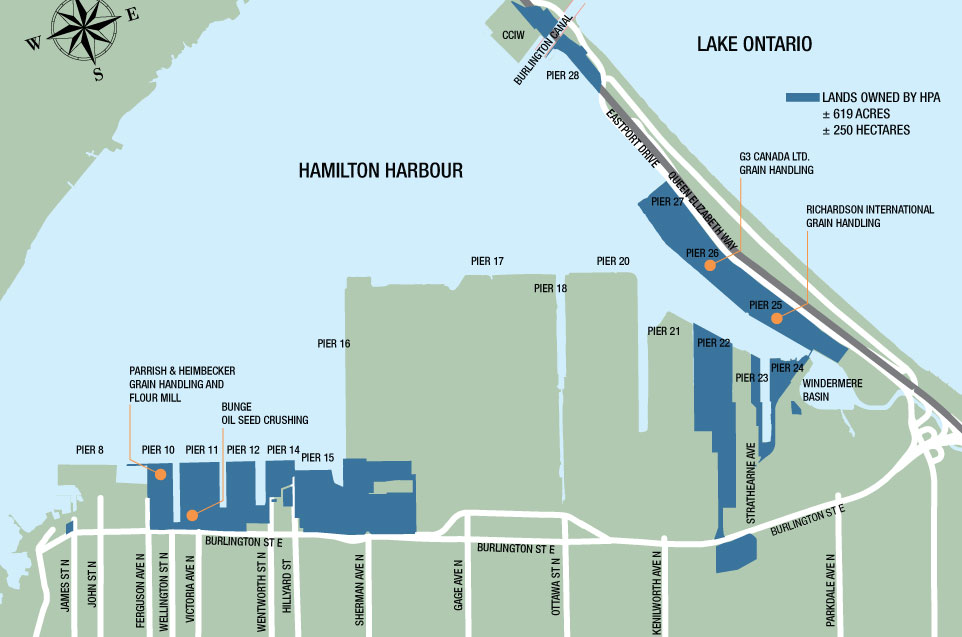
Grain handling facilities at the Port of Hamilton
Grain Handling: How it Works

Grain arrives at port terminals by truck or railcar.
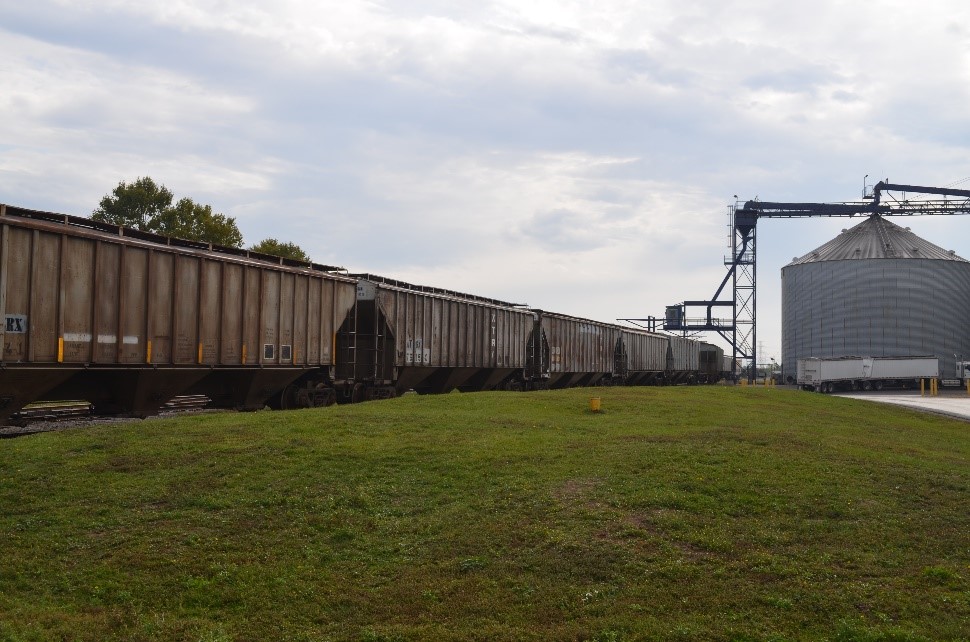
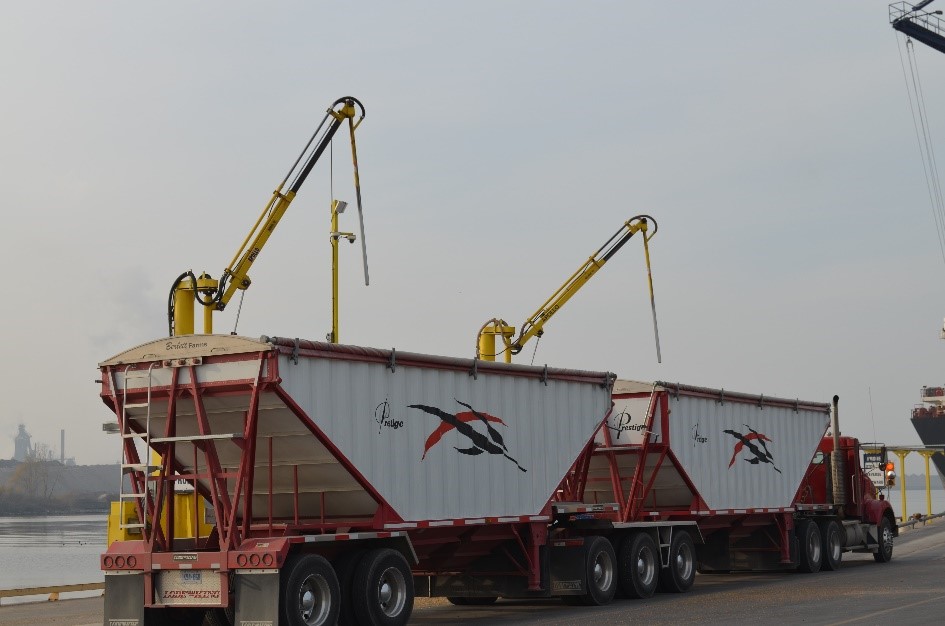
Grain is sampled from inside the truck using a hydraulic probe and transported through a vacuum tube to the on-site testing facility.

When the grain is delivered to port tenant terminals, the grain in the truck is sampled, and that sample is analyzed for a number of quality specifications according to Canadian Grain Commission standards. These quality specifications include moisture content, protein content, product weight and general kernel maturity.
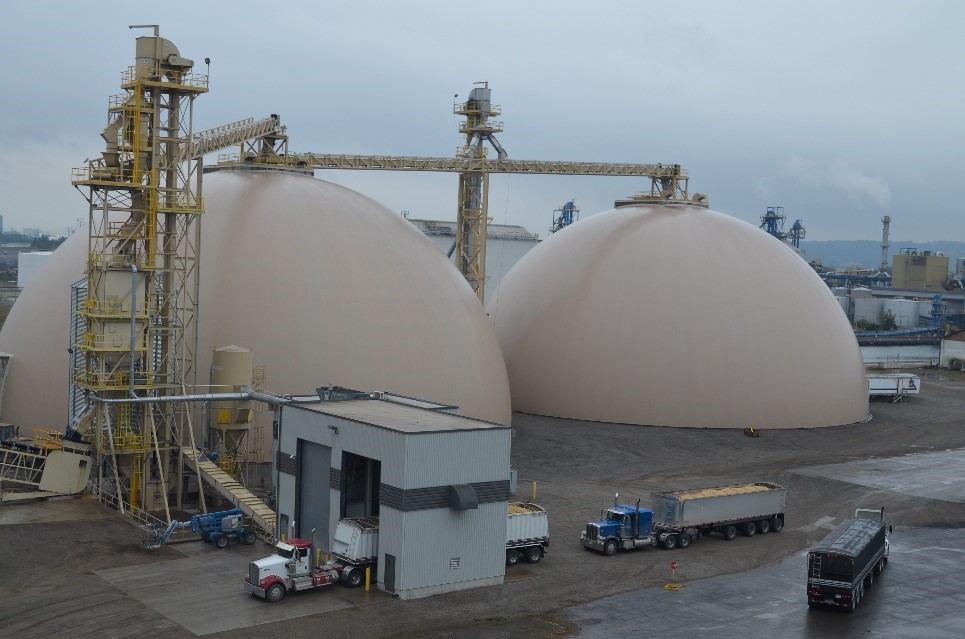
If the grain meets quality standards, the truck proceeds to an in-ground collection pit, where it is unloaded through the rear or hopper-bottom.
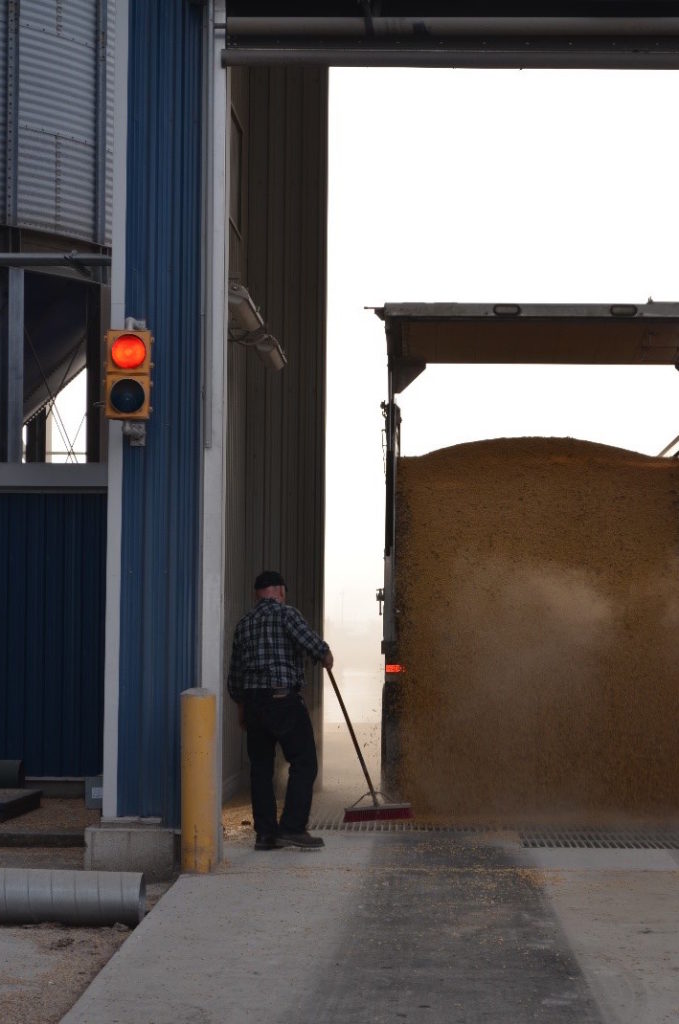
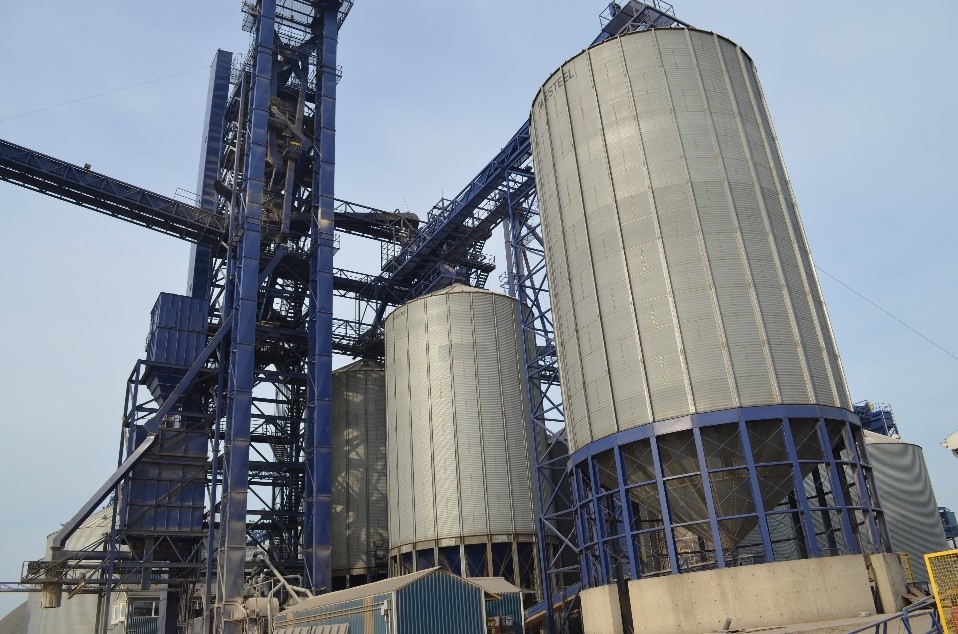
Conveyors move the grain to silos for storage…
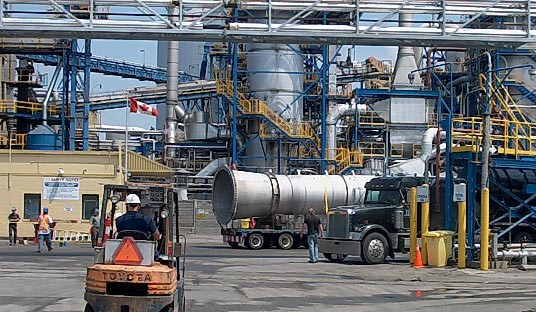
…into a seed crush facility for on-site processing…
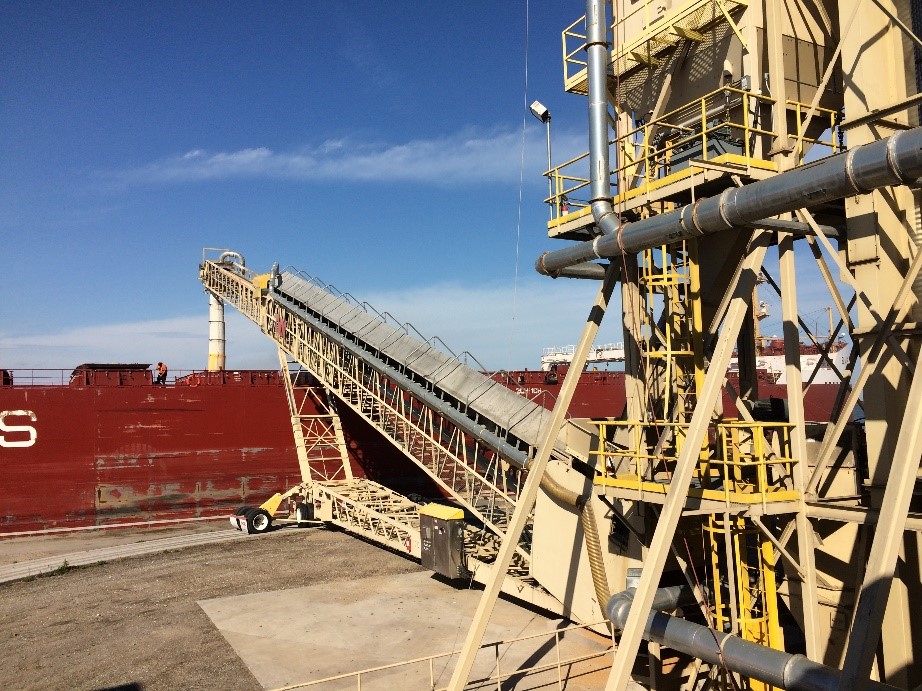
…Or directly on to a vessel, where grain fills ship holds one by one using a spout. Note the covered conveyer belt and ‘sock’ on the spout to minimize dust while the grain is moved.
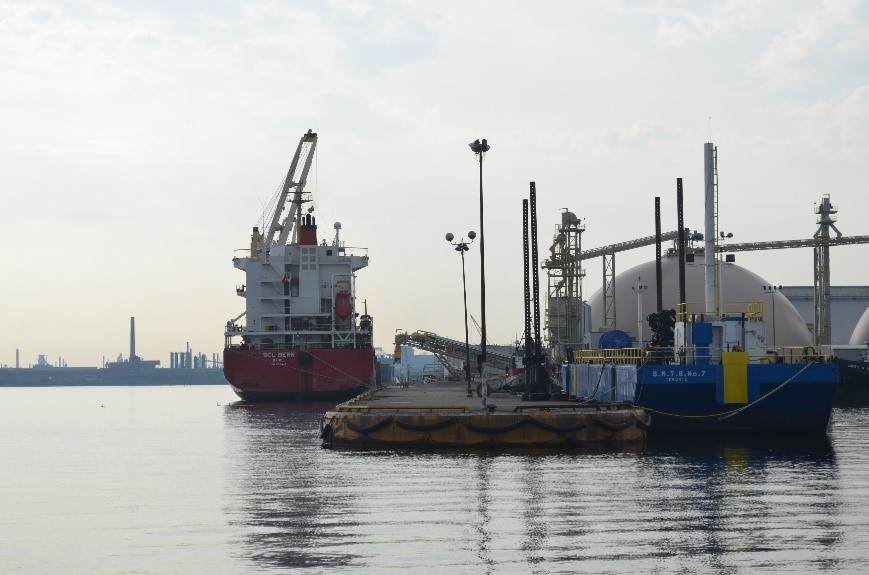
From here, Ontario-grown grain is exported to Europe and beyond; contributing to food products and meals on tables around the world.
Community Impact
HPA and terminal operators located at the port recognize that dust may occasionally arise from the grain-handling process. Operators are taking ongoing steps to minimize escaping dust. Proactive initiatives include:
- Filling ship holds one at a time, keeping all others closed.
- Placing the loading spout as deep into the hold as possible.
- Not loading at times of high winds.
- Enclosed conveyor systems.
If you have a noise, odour or dust complaint, please be sure to let us know as soon as possible, by calling:
- HMO/Port Security 24 hrs.: 905.525.3412.
DID YOU KNOW?
- The products handled by grain terminals at the Port of Hamilton are the same food products we find on our grocery store shelves and kitchen tables every day, including:
- Wheat used in pasta and bread
- Dry corn, like the corn meal used on the underside of pizza
- Soy and canola, blended for use in cooking oils, including the type used in well-known Canadian-produced varieties of potato chips and doughnuts.
- Agri-food represents $1 billion of economic activity in Hamilton.
- Facilities like Parrish & Heimbecker’s new flour mill support local agri-food supply chains, keeping food processing and associated jobs in Canada.
- The food sector employs 1 out of every 9 Ontarians. (Ontario Chamber of Commerce)
- The Hamilton Air Monitoring Network (HAMN) operates a number of air quality monitoring stations in Hamilton’s industrial area – its website provides publicly-accessible real-time air quality data. http://www.hamnair.ca/





